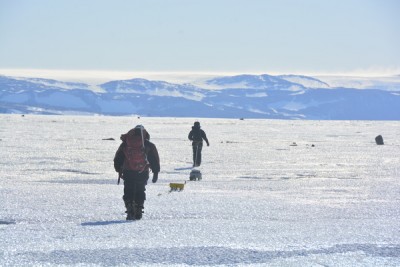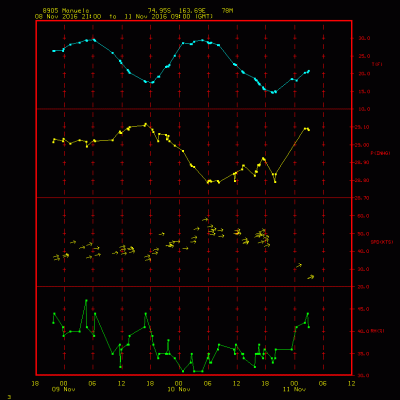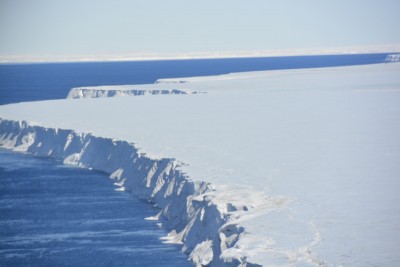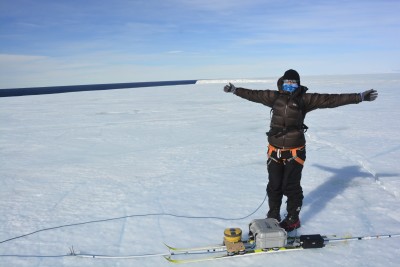Nansen Ice Shelf
The Nansen Ice Shelf is a medium-sized (1500 km2) ice shelf on the Victoria Land Coast in Antarctica. It is some 40 km south of the Korea Polar Research Institute (KOPRI) base called Jang Bogo Station. The ice here flows from the Polar Plateau from the east through two gaps in the Transantarctic Mountains – the Reeves Glacier on the southern and the Priestly Glacier on the northern side. These large glaciers merge together to form the ice shelf and flow west to occupy the large embayment roughly between Inexpressible Island, to the north, and the Drygalski Ice Tongue (the world’s largest and coolest ice tongue!), to the south. The Nansen Ice Shelf ends in ice cliffs at Terra Nova Bay – an area relatively free of sea ice (a polynya).

Christine Dow and Jin Hong Kim doing radar lines on the Nansen Ice Shelf
Christine Dow (University of Waterloo) and Derek Mueller were there in November 2016 to conduct ice penetrating radar (IPR) surveys on the ice shelf. This was part of a far larger effort called Land-Ice/Ocean Network Exploration with Semiautonomous Systems (LIONESS). The idea behind this research project is to examine many environmental processes with technological solutions like passive seismic sensors (looking for ice-quakes and possible calving events), autonomous underwater vehicles (AUVs) and gliders (to map the underside of the ice shelf and gather water property measurements), moorings installed through the ice (to measure the ocean below), and use radar – an airborne system from a helicopter and a hand-towed IPR. The latter is what we used to survey near the edge of the ice shelf so our thickness data from November could be used for AUV mission planning in January.

Weather reports from Inexpressible Island showing high winds (30-60 kts). This station was installed in the 1980s by Greg Crocker among others (http://amrc.ssec.wisc.edu/aws/index.php?region=Reeves%20Glacier&station=Manuela)
We were able to access the ice shelf a total of nine days and got over 80 km of surveying done at three sites. The wind blew up to an incredible 60 kts on the ice shelf for days on end and we were stuck in the relative comfort of Jang Bogo Station waiting for the weather to be flyable. This was a great place to be – it is a very modern facility, built in 2014, and houses about 60 scientists and staff. We got used to Korean food and hearing K-pop over the loudspeakers to announce mealtimes. We brought the data we collected back to Canada where it is being worked up by MSc student Peter Wray.

The calving front of the Nansen Ice Shelf, with the Drygalski Ice Tongue in the background (D.Mueller)
This project was made possible with logistical support from KOPRI as well as financial assistance from NSERC and the University of Waterloo. Special thanks are due to Jin Hong Kim, Won Sang Lee, Don Blankenship and Alex Forrest and their teams. This research is part of the Canadian Arctic-Antarctic Exchange Program (Polar Shelf).
For more photos, see the Nansen gallery!

Christine embraces the wind near the front of the ice shelf (D.Mueller)
